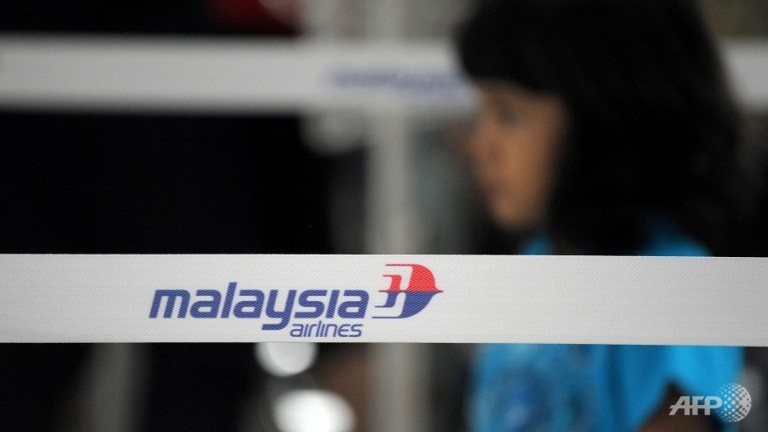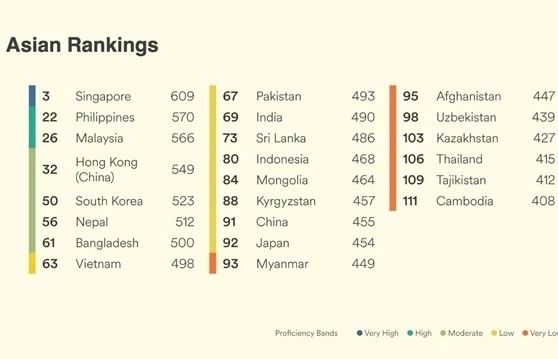Disappearance of Malaysian jet appears "deliberate": PM Najib

A Malaysian Airlines logo (MAS) at the Kuala Lumpur International Airport (KLIA) in Sepang, outside Kuala Lumpur.
(AFP/MOHD RASFAN)
KUALA LUMPUR: A missing Malaysian airliner was apparently deliberately diverted and flown for hours after vanishing from radar, Prime Minister Najib Razak said Saturday, in an announcement that stopped short of confirming a hijack but took the "excruciating" jet drama into uncharted new territory.
Najib said investigators believed "with a high degree of certainty" that Malaysia Airlines flight 370's communications systems were manually switched off, and that the plane veered westward in a fashion "consistent with deliberate action" after dropping off primary radar.
But he told a highly anticipated press conference watched around the world that he could not confirm rising suspicions that the plane had been forcibly taken over.
"Despite media reports that the plane was hijacked, I wish to be very clear: we are still investigating all possibilities as to what caused MH370 to deviate from its original flight path," he said.
The investigation data appeared to cast aside a host of theories attempting to explain the plane's disappearance, which has transfixed the world and left the families of the 239 passengers and crew distraught, enraged and baying for information that authorities have not been able to provide.
These include the notion of a sudden mid-air explosion or a catastrophic equipment or structural failure, or a crash into the South China Sea.
At the same time, it opened a whole new avenue of possible speculation, including an attempted 9/11-style attack, enhancing the twist-and-turn mystery surrounding one of the biggest enigmas in modern aviation history.
Final satellite communication with the Boeing 777 flying from Kuala Lumpur to Beijing came more than six-and-a-half hours after it vanished from civilian radar at 1:30am on March 8, Najib said.
He said investigators had concluded the plane was indeed diverted to the west from its original flight path, and as a result search operations in the South China Sea were being called off.
But the remaining area remained dauntingly large. Najib said the plane could be anywhere from "Kazakhstan and Turkmenistan to northern Thailand, or a southern corridor stretching approximately from Indonesia to the southern Indian Ocean".
Earlier, a senior Malaysian military official had told AFP that investigators now believe the plane was commandeered by a "skilled, competent and current pilot," but stopped short of specifying whether a hijacker or member of the crew was suspected.
"He knew how to avoid the civilian radar. He appears to have studied how to avoid it," the official said.
As the search for the plane continues, the focus in the gripping saga will shift to who would have diverted the plane and why.
Malaysian security officials were already embarrassed by revelations earlier in the week that two Iranian men had managed to board the plane using stolen European passports.
It could also bring new attention on Captain Zaharie Ahmad Shah, 53, and his First Officer Fariq Abdul Hamid, 27.
An Australian television report broadcast an interview with a young South African woman who alleged Fariq and another pilot colleague invited them into the cockpit of a flight he co-piloted in 2011 -- a breach of post-9/11 security rules.
Gerry Soejatman, a Jakarta-based independent aviation analyst told AFP following Najib's remarks that the new information makes a possible motive "extremely difficult to understand."
"If that was deliberate, we may be dealing with something beyond the mission planning for 9/11," he said.
As unconfirmed reports had mounted suggesting the plane banked west and flew for hours, analysts have speculated on a sudden loss of cabin pressure or other mechanical event that incapacitated the pilots, catastrophic pilot error, a hijack, action by a rogue member of the flight crew, or pilot suicide.
The reports of a westward bank had coincided with an accelerating shift of search and rescue resources towards the Indian Ocean.
A US destroyer and surveillance plane joined expanded search operations Saturday in the Bay of Bengal.
Pentagon spokesman Colonel Steven Warren said the USS Kidd guided missile destroyer and a P-8 Poseidon aircraft had been deployed to the "western search area" in the Andaman Sea and Bay of Bengal.
The Boeing 777 vanished over waters between Malaysia and southern Vietnam. The night was clear and no distress signal was received.
Dozens of ships and aircraft from 14 countries have been deployed across the entire search zone since MH370 went missing.
For distraught relatives of the passengers and crew, the long drawn-out search has been torture.
"Right now, anything is possible," said a middle-aged Chinese woman in Beijing who had a relative on the flight and complained of a lack of information.
"We keep hoping there will be some good news, but it's not going well."
Even with attention now firmly on the Indian Ocean, the search parameters pose enormous logistical challenges.
The vast Indian Ocean has an average depth of nearly 3,900 metres and any debris would have been widely dispersed by currents after a week.
"Wind and sea conditions are definitely going to play a very big part if there is wreckage, and if it happens to be in the Indian Ocean. It is an immense area," said Greg Waldron, Asia managing editor for aviation industry magazine FlightGlobal.
The plane has one of the best safety records of any jet, and the airline also has a solid record.
What the stars mean:
★ Poor ★ ★ Promising ★★★ Good ★★★★ Very good ★★★★★ Exceptional
Latest News
More News
- Adult vaccination and shingles prevention in Vietnam (November 22, 2024 | 19:52)
- Hanoi strengthens measures to prevent mismanagement and wastage of public assets (November 21, 2024 | 17:42)
- First international summit on shingles prevention held in Vietnam (November 18, 2024 | 10:00)
- Global education to improve quality of workforce (November 17, 2024 | 08:53)
- “Run for zero violence against women and girls in Vietnam” gets set (November 16, 2024 | 09:39)
- VSF empowers communities through micro-credentials (November 16, 2024 | 09:00)
- Final round of admin reform competition to take place in Hanoi (November 14, 2024 | 12:16)
- Hanoi pilots electronic health record solution (November 10, 2024 | 12:25)
- Vietnamese consumer sentiment outperforms regional averages (November 08, 2024 | 18:00)
- Japfa Vietnam serves nutrition to 1,500 children to year-end (November 06, 2024 | 16:32)

















 Mobile Version
Mobile Version